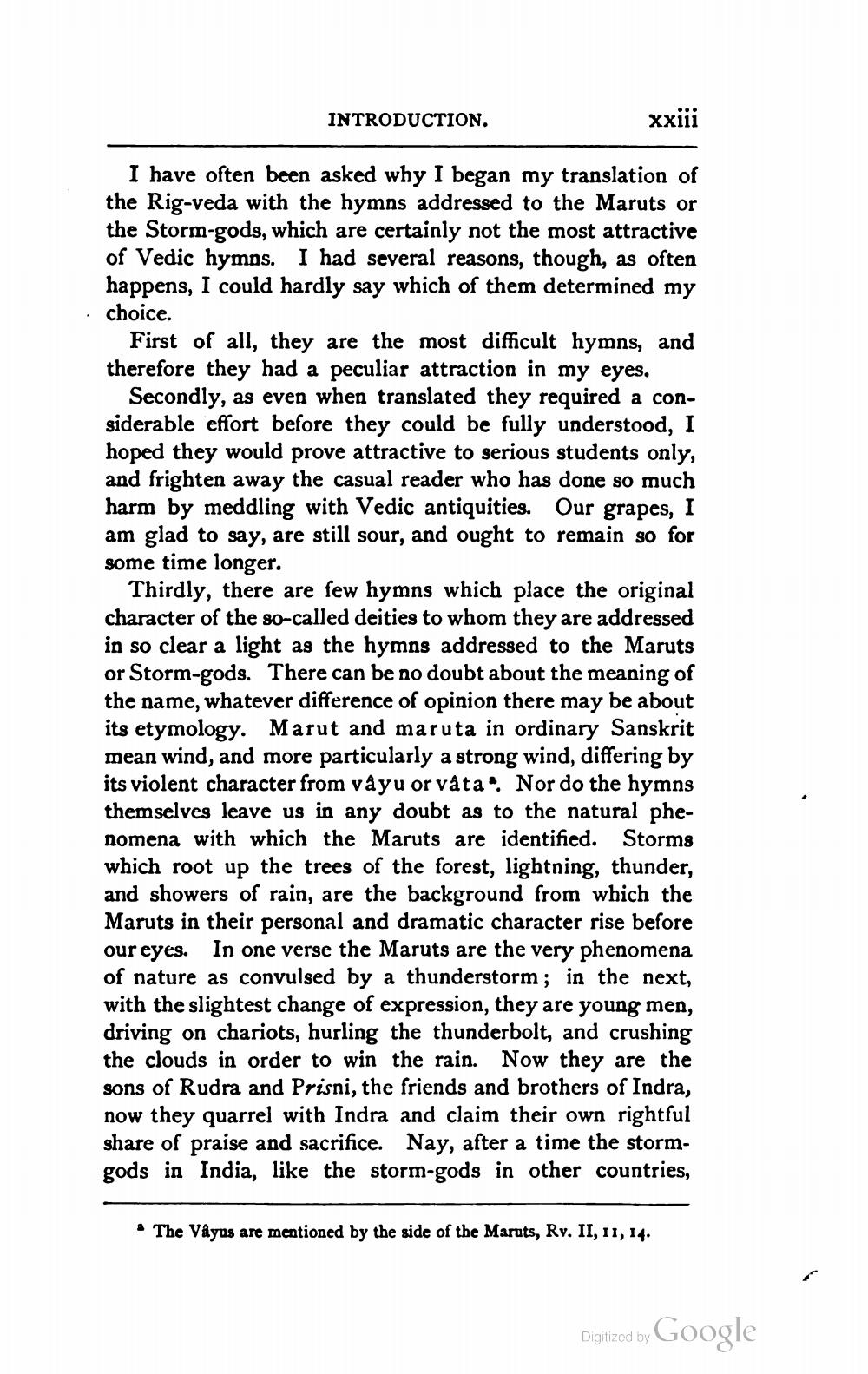________________
INTRODUCTION.
xxiii
I have often been asked why I began my translation of the Rig-veda with the hymns addressed to the Maruts or the Storm-gods, which are certainly not the most attractive of Vedic hymos. I had several reasons, though, as often
happens, I could hardly say which of them determined my · choice.
First of all, they are the most difficult hymns, and therefore they had a peculiar attraction in my eyes.
Secondly, as even when translated they required a considerable effort before they could be fully understood, I hoped they would prove attractive to serious students only, and frighten away the casual reader who has done so much harm by meddling with Vedic antiquities. Our grapes, I am glad to say, are still sour, and ought to remain so for some time longer.
Thirdly, there are few hymns which place the original character of the so-called deities to whom they are addressed in so clear a light as the hymns addressed to the Maruts or Storm-gods. There can be no doubt about the meaning of the name, whatever difference of opinion there may be about its etymology. Marut and maruta in ordinary Sanskrit mean wind, and more particularly a strong wind, differing by its violent character from vayu or våta“. Nor do the hymns themselves leave us in any doubt as to the natural phenomena with which the Maruts are identified. Storms which root up the trees of the forest, lightning, thunder, and showers of rain, are the background from which the Maruts in their personal and dramatic character rise before our eyes. In one verse the Maruts are the very phenomena of nature as convulsed by a thunderstorm; in the next, with the slightest change of expression, they are young men, driving on chariots, hurling the thunderbolt, and crushing the clouds in order to win the rain. Now they are the sons of Rudra and Prisni, the friends and brothers of Indra, now they quarrel with Indra and claim their own rightful share of praise and sacrifice. Nay, after a time the stormgods in India, like the storm-gods in other countries,
• The Vayus are mentioned by the side of the Maruts, Rv. II, 11, 14.
Digized by Google




